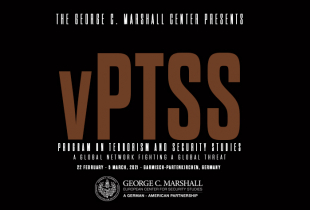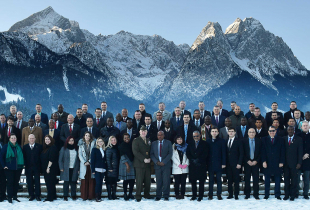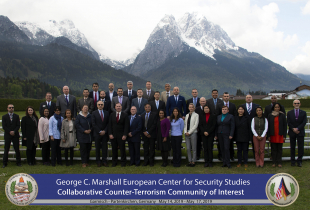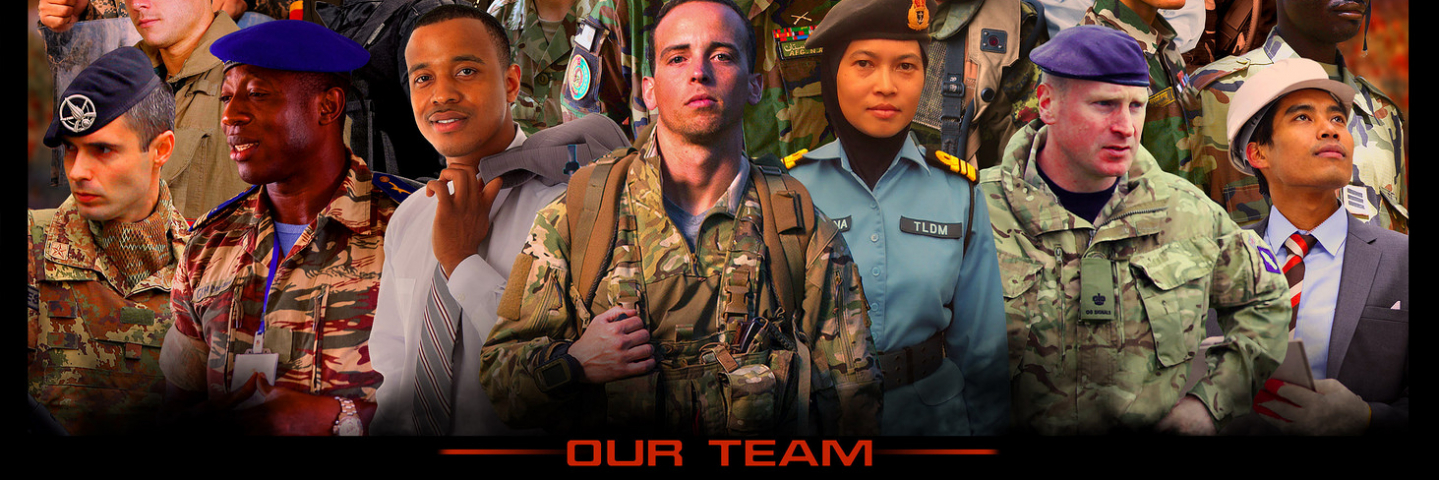
Global Priorities in Terrorism and Counter-Terrorism: Practitioner Perspectives
Summary
This research note reports the results of a pilot questionnaire on priorities in terrorism and counterterrorism, which was completed by seventy-five security-sector professionals from more than fifty countries who attended the Program on Terrorism and Security Studies (PTSS) at the George C. Marshall European Center for Security Studies (GCMC) in Garmisch-Partenkirchen, Germany, from July to August, 2017. The results reveal that these practitioners consider terrorism to be one of the most serious threats to stability in their countries. Participants were especially concerned with jihadist terrorism and were more or less equally concerned with lone actors versus foreign fighters. The majority identified online versus offline methods as most important to terrorist recruitment, however this difference of opinion was not large. Looking to the future, they viewed hacking/cyber attacks by terrorists as particularly likely. In terms of counter-terrorism (CT), intelligence agencies were seen as playing the lead role, while cooperation between domestic CT agencies was seen as the biggest challenge. In contrast to this, terrorist use of encrypted communications was seen as least challenging. Participants were evenly split in their views on political negotiations with terrorists, but displayed a comparatively high degree of optimism about the prospects of deradicalization. Nevertheless, they also appeared to hold a government-centric view of CT, seeing relatively little role for civil society and non-governmental organizations. Border control was viewed as the capability most in need of further development.
Introduction
Recent years have seen a significant increase in terrorist activity around the globe, as more than 40,000 foreign terrorist fighters (FTFs) representing more than a hundred countries have traveled to Syria and Iraq. Nations directly impacted by civil war and insurgency have been most affected, but violence continues to spread beyond the conflict zones, with mass casualty attacks occurring in Tunisia, Turkey, Egypt, France, Belgium, and elsewhere. Now, as the self-styled Caliphate is crumbling, countries all over the world are bracing for the return of battle-tested FTFs, while at the same time trying to monitor thousands of frustrated sympathizers who were prevented from traveling and are now eager to inflict violence at home.
Yet, despite dominating public perceptions, these are not the only terrorism threats in existence today. We are simultaneously faced with a variety of other threats including steadily growing, right-wing motivated violence as well as continued ethno-nationalist and left-wing insurgencies in places like Colombia, Turkey, India, and the Philippines. Arguably, the global terrorism landscape is more complex and dynamic than it has ever been before. This makes it extremely challenging for over-burdened and under-resourced security services.
While there is no shortage of research on the topics of terrorism and national security, analyses of the views of current, front-line counter-terrorism practitioners (especially at the aggregate and multinational levels) are still relatively rare. In order to address this gap, a pilot questionnaire was designed to explore the perceptions of practitioners working in the security sector regarding the nature of contemporary terrorism threats and challenges in counter-terrorism (CT). This is the first step in a larger research project that will explore these issues in greater depth in coming months.
Method
A brief, exploratory questionnaire was designed by the authors to gain insight into the views of CT practitioners attending the Marshall Center’s Program on Terrorism and Security Studies (PTSS), a four week strategic-level course for military, police, intelligence, and other government officials from around the globe. The questionnaire consisted of seven questions regarding perceptions of terrorism threats (Part 1) and six questions regarding issues in CT (Part 2). Questions were all fixed-choice, with participants being asked to either rank certain issues or to make binary choices. The questionnaire was administered online and was completed at the beginning of the PTSS in order to gain insight into perceptions held prior to attending the course. Participation was voluntary and anonymous.
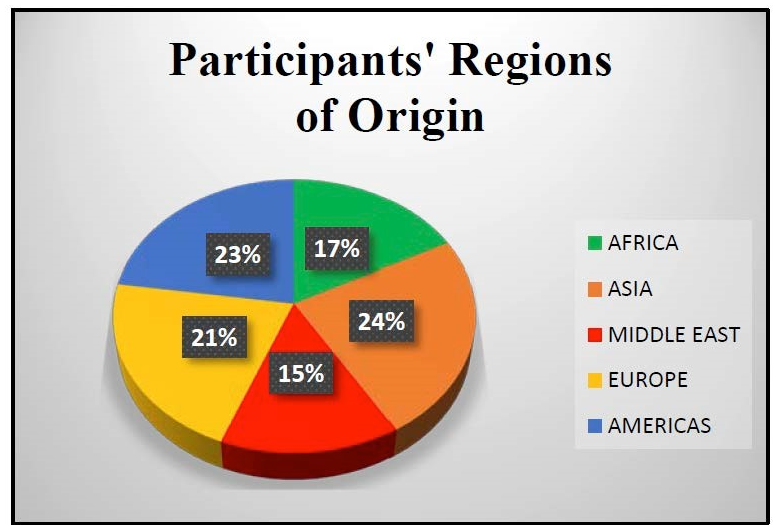
Seventy-five PTSS participants from more than fifty countries [1] across Africa, Asia, the Middle East, Europe, and the Americas completed the questionnaire (see Figure 1). This included seventy male and five female course participants, most of whom are non-native English speakers. Sixty-two percent were members of the military versus 38% in civilian roles. The majority of military participants were officers ranging from first lieutenant to major general. Sixty-six percent were either majors, lieutenant colonels, or colonels. In addition, there were three cadets. Among civilians, the majority worked either in ministries of interior/internal security or law enforcement (38%) or ministries of foreign affairs (23%).
Participants’ involvement in CT varied widely, but most had some direct experience. Collectively, they had conducted investigations, combat operations, and prosecutions. Some were also involved in national-level CT planning, coordination, and strategy-building.
Results Part 1: Threat Perceptions
Among both politicians and members of the public, terrorism is frequently viewed as one of the most serious threats to national security. In order to gain insight into the views of CT practitioners, questionnaire respondents were asked which of the following threats to stability they were most concerned about in their countries: war with a neighboring state; economic problems; terrorism; cyber-attacks; or organized crime. Participants placed each threat in rank order, where 1 indicated most concern and 5 the least. Thirty-one percent of participants ranked economic problems as the number one threat to stability, followed by terrorism at 27%. However, the difference here is small and the weighted average ranks for these items were practically identical (2.4 vs. 2.2 respectively), showing that, overall, these issues were seen as being of equal importance. Cyber-attacks and organized crime were seen as less significant and were also ranked equivocally, with weighted averages of 3. Finally, war with a neighboring state (average rank 3.7) was seen as the least significant threat by the majority of participants.
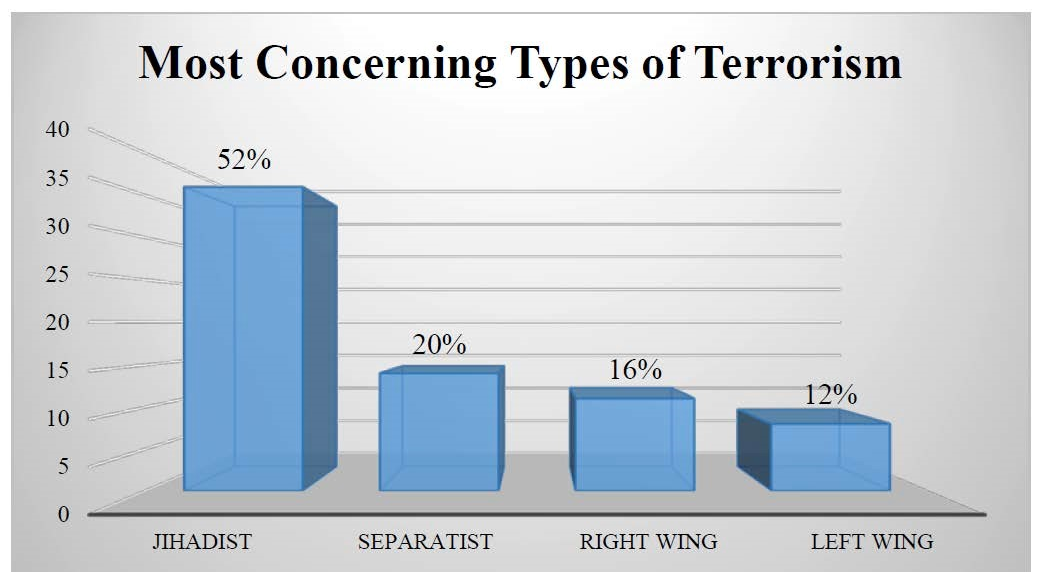
Given that terrorism and economic problems were generally seen as the top threats to stability, it might have been expected to find that participants also viewed these as being closely related. However, when asked to identify what factor they saw as most closely associated with terrorism, most participants chose “political repression/injustice” (38%) or organized crime (28%). “Poverty and/or lack of education” ranked third at 22%, followed by corruption (13%). Political repression/injustice also ranked highest in average terms at 2.2, with no real difference between the other items, which had scores of 2.5 or 2.6.
Participants were further asked to identify which of the following types of terrorism they were most concerned with in their country by placing them in rank order: jihadist; right-wing; left-wing; and separatist. Unsurprisingly, 52% of participants ranked jihadist terrorism as their top concern, followed by separatist terrorism at 20% (see Figure 2, above). Jihadist terrorism was also ranked the highest on average, with a score of 1.1, followed by right-wing (2.1), left-wing (2.2), and separatist terrorism (2.6).
Since jihadist terrorism was expected to be seen as the number one terrorism threat, participants were also asked whether or not they viewed al-Qaeda and ISIS as threats to the survival of their countries. Somewhat surprisingly, 37% responded “yes” to this question, suggesting a particularly high threat perception across a broad, international spectrum.
In order to dig deeper into threat perceptions, participants were asked to state whether— in their countries—they were more concerned about lone actors (defined as “untrained individuals acting by themselves without organizational support”) or foreign fighters (defined as “trained operatives acting with the support of terrorist organizations”). Results revealed that 54% of participants were most concerned by lone actors, versus 46% who were most concerned by foreign fighters. A related issue of significant interest concerns terrorist recruitment methods. When asked which was more important to terrorist recruitment in their countries, 58% of participants selected online interaction, versus 42% who selected face-to-face.
Finally, participants were asked to rank the following emerging/future threats according to which they saw as most likely to occur in their countries: drone attacks, hacking/cyber attacks, or chemical, biological, radiological, or nuclear (CBRN) attacks. Results revealed that 61% of survey respondents viewed hacking/cyber attacks as most likely, followed by drones with 29% and CBRN attacks with just 10%.
Results Part 2: Counter-Terrorism
In the second part of the questionnaire, respondents were asked about their views on issues of CT. To begin with, they were asked which type of agency should play the lead role. The response was overwhelmingly in favor of intelligence agencies taking the lead, ranked number one by 64% of respondents and yielding an average score of 1.6. This was followed by military and police, which were ranked more or less equally (with respective averages of 2.7 and 2.5). Finally, civil society and non-governmental organizations (NGOs) were seen as playing the smallest role in CT, ranked first by just 9% of respondents and yielding an average score of 3.1.
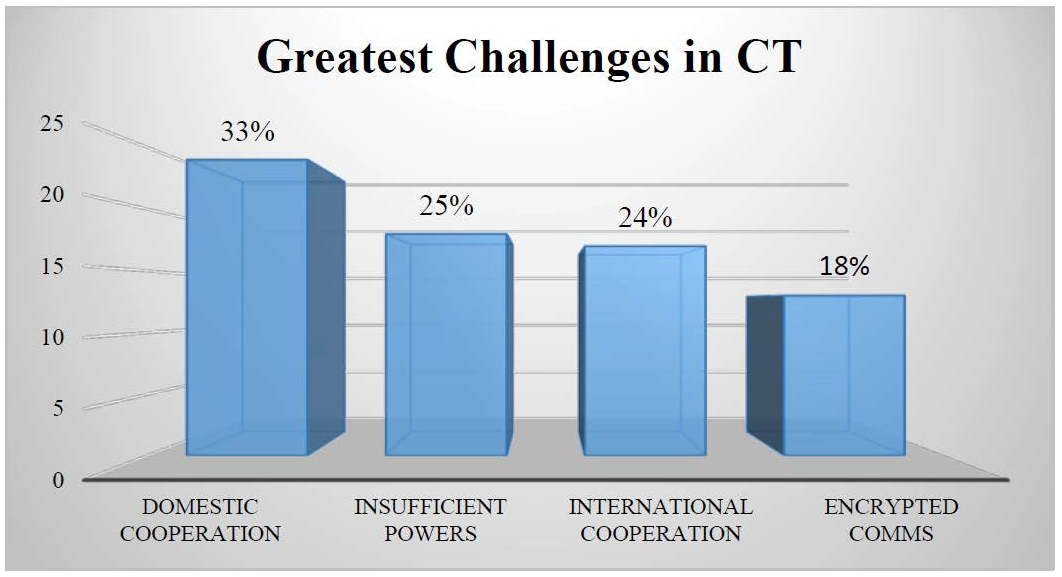
In order to get a sense of which specific aspects of CT participants found most difficult, they were asked to rank the following from most to least challenging: cooperation between domestic CT agencies; international CT cooperation; insufficient legal powers for security services; or terrorist use of encrypted communications (see Figure 3, above). Contrary to expectations, domestic cooperation was rated the most challenging by 33% of respondents, followed by insufficient legal powers (25%) and international cooperation (24%). However, there was very little difference between these issues on average, each earning scores of 2.2 or 2.3. Surprisingly, terrorist use of encrypted communications was seen as least challenging, ranked first by just 18% of participants and with an average rank of 2.8.
Next, participants were asked to rate the degree of cooperation between CT agencies in their countries on a scale of 1 to 10, with 1 being “extremely dysfunctional” and 10 being “perfect.” Despite the fact that cooperation between domestic agencies had been rated as the most challenging aspect of CT, just 14% of participants rated this less than 5, while 69% rated it 6 or above. The average rating was 6.7, indicating a fairly positive assessment overall.
Shifting attention to the utility of specific CT tools, participants were asked about political negotiations with terrorists and de-radicalization programs. Regarding the former, they were evenly split, with 49% reporting that they believed we should sometimes negotiate with terrorists at the political level, versus 51% who responded in the negative. Interestingly, however, participants were more optimistic about influencing individual terrorists, with 81% responding that they believed it was possible to “de-radicalize” some terrorists, versus 19% who thought it was not.
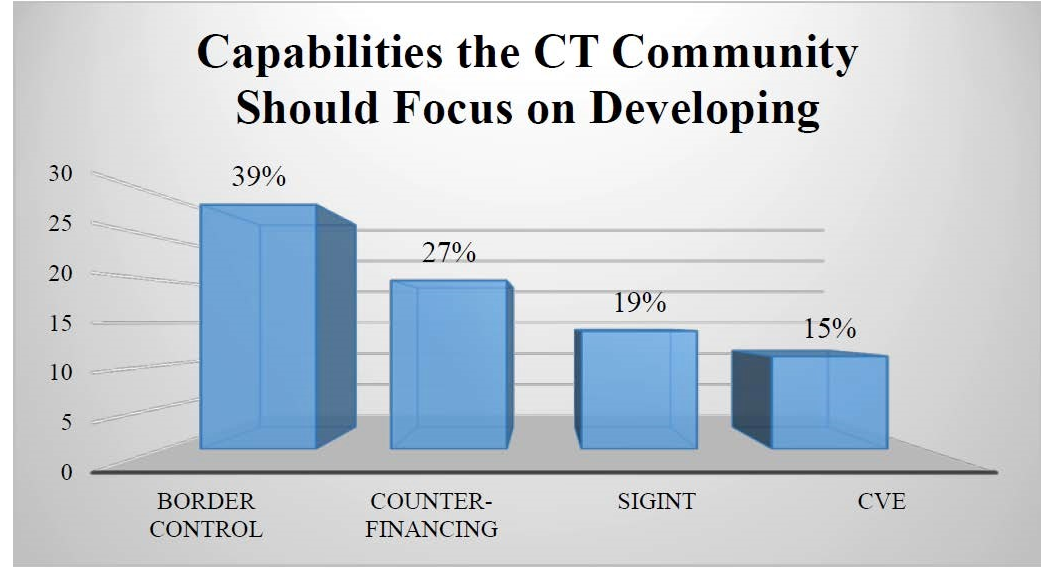
Finally, participants were asked which capabilities they thought the CT community should focus on developing, with a choice of signals intelligence / electronic surveillance (SIGINT); counter-financing; countering violent extremism (CVE)[2]; and border control (see Figure 4, above).
Thirty-nine percent selected border control as the most important capability in need of development. This was followed by counter-financing (27%), SIGINT (19%) and lastly, CVE with just 15%. On average, there was little difference between the top three (each ranking 2.3 or 2.4) but CVE again stood out as least important, with an average rank of 2.7.
Discussion
In terms of threat perceptions, it was not surprising to find that CT professionals around the world clearly view terrorism as a top threat to stability in their countries. The fact that economic problems (strictly speaking, a challenge rather than a threat) were viewed as being of more or less equal importance speaks to the ubiquitous nature of financial concerns, which of course have an impact upon CT and other security capabilities. It was interesting to note, however, that participants did not conflate these issues and instead saw terrorism as being most closely associated with political repression/injustice. Moreover, these perceptions may be well-founded. For example, the 2016 Global Terrorism Index reported that 93% of all terrorist attacks between 1989 and 2014 occurred in countries with “high” levels of state-sponsored terror.
Although it was expected that most participants would be chiefly concerned with jihadist terrorism (given its global reach), it was surprising to find that more than a third viewed it as a threat to the very survival of their states. Aside from a small number of countries, such as Syria, Iraq, and Afghanistan, such fears would appear to be exaggerated. Understanding how and why such perceptions are formed is a topic for future research. Regarding other types of terrorism, it seems that for those faced with separatist threats, this is a high priority. However, right- and left-wing terrorism were ranked slightly higher than separatist terrorism on average. This suggests that the former types tend to be more common, but more likely to be perceived as secondary threats.
The fact that lone actors and foreign fighters were viewed almost equivocally (with slightly more people rating the former as most concerning) is another somewhat curious finding. More than a hundred countries around the world have produced foreign fighters. They also represent a far more formidable threat than lone actors, who are comparatively rare and much less capable. It is possible that such concerns are based on the added difficulties in detecting and therefore preventing lone actors from conducting attacks. However, as with all of these issues, additional, qualitative data are needed to provide more definitive answers.
Conceivably, the concern over lone actors could also be tied to perceptions about terrorist recruitment, since the internet was seen as particularly important and this has been shown to play a significant role in lone actor terrorism. Nevertheless, the difference of opinion on this issue was not vast and a large number of PTSS participants viewed face-to-face interaction as being more significant. This stands in contrast to public and political obsession with terrorist activity online and likely reflects greater “insider knowledge” of terrorist methods of recruitment among CT practitioners.
Despite some disagreement about the significance of the internet to terrorist recruitment, it was nevertheless seen as the primary issue of concern regarding terrorism threats in the future, specifically in the form of hacking/cyber attacks. This may be a reflection of the uptick in hacking and similar operations by the Islamic State (IS), perhaps combined with a general sense of unease about what is a very technical, specialist area in which relatively few practitioners are directly involved. Equally, terrorist use of drones has also increased quite dramatically and in comparison to hacking is probably easier to do. It is thus surprising this was not rated more highly. By contrast, the perception that CBRN attacks are least likely is substantiated by terrorists’ weak track record in this area, despite the use of chemically-augmented improvised explosive devices in Iraq.
Turning our attention to CT, good intelligence is essential for countering terrorism, which likely explains why the majority of participants opined that intelligence agencies should play the largest role. The fact that this was followed by police and military and these were ranked fairly evenly is likely a reflection of the diverse, international sample. For some, the police would be most appropriate, while for others it would be the military, depending on the scale of the threat, as well as differing legal frameworks. Given that all participants were government officials, it is also not particularly surprising to find that civil society and NGOs were viewed as playing the smallest role in CT. Nevertheless, this is also potentially a cause for concern in that it may reflect government-centric approaches to CT that run the risk of overlooking the often extremely valuable contributions of civil society. Indeed, in the authors’ experience, it is not uncommon for practitioners to express suspicion or even some hostility towards NGOs.
As noted above, intelligence may be fundamentally important to CT, but it must also be shared if it is to be effective, and this depends on interagency cooperation. Participants’ views on this were mixed. On the one hand, they viewed domestic (as opposed to international) cooperation as the number one challenge, yet at the same time the majority of them rated this same cooperation as quite positive overall. In trying to explain these results, it could be that “turf wars” play more of a role on the domestic versus international stage. It could also be that the key takeaway here is not the overall positive rating of domestic interagency cooperation, but the fact that there is still clearly room for improvement. Furthermore, we should not lose sight of the fact that domestic as well as international cooperation and insufficient legal powers were all ranked quite similarly as challenges. What is perhaps most surprising here, given public debates about “going dark,” is that terrorists’ use of encrypted communications was seen as least challenging. One possible explanation for this is that many nations are less technologically advanced in this regard than countries like the US and UK, which have led the public discourse on this subject. As a result, they lack the resources and capabilities to use SIGINT to the same extent and are likely more heavily invested in human intelligence or other methodologies that do not depend on collection capabilities threatened by encryption.
The remaining questions each touched upon the participants’ confidence or interest in “soft” approaches to CT, specifically negotiations, de-radicalization, and CVE. As noted above, they were divided about the utility of negotiations (perhaps a reflection of the heavy military and “hard” CT background of most of those who completed the questionnaire), yet they seemed surprisingly confident about the prospects of de-radicalization. This difference in attitude towards negotiations versus de-radicalization is perhaps due to the fact that people typically seem to view the former as involving potentially major concessions, but are less likely to think of the latter in such terms. Nevertheless, the high degree of openness to de-radicalization initiatives was quite unexpected and is a possible indication of both growing knowledge and acceptance of these sorts of approaches to CT. At the same time, participants viewed CVE as being the least important area of CT worth developing, which is congruent with their earlier, collective assertion that civil society and NGOs have the smallest role to play. Practitioners thus appear to view soft and non-governmental approaches as secondary efforts in CT, despite some belief in their utility.
This is reinforced by the fact that border control, counter-financing, and SIGINT were all seen as more worthwhile areas in need of development. The fact that border control was seen as the most important in this respect suggests that practitioners from a variety of different countries view this as an area of comparative weakness and at the same time remain concerned about terrorists’ physical movements, despite the significance of the internet. The focus on border control may also be a reaction to the quite recent focus on interdiction of FTFs returning home from Iraq and Syria. This raises questions about how, specifically, border control might be improved and what role it is expected to play in broader, long-term CT strategies.
Concluding Remarks
Overall, the picture that emerges suggests that CT practitioners are not necessarily fixated on any particular threat or technology (other than that most are faced with jihadist versus other types of terrorism) – rather they seem to be concerned with almost everything. Hence the more or less equivocal views on issues such as lone actors versus foreign fighters and online versus face-to-face recruitment, in addition to comparable average rankings for a variety of other issues. This is perhaps indicative of a “full spectrum” awareness of different aspects of contemporary terrorism threats, which is something that might be expected from professionals working in this field. Of course, it may also be reflective of the extremely broad, international sample and the fact that participants were facing very different manifestations of the threat. Nevertheless, as noted above, respondents generally agreed on the importance of intelligence, and also seemed to share a rather government-centric view of CT. This latter finding raises the question of whether non-governmental contributions to CT and CVE are properly understood.
Finally, it must be emphasized that this research was very much exploratory and the findings presented are tentative. A great deal of effort was made to ensure that the questionnaire was as simple as possible, given the varied English-language skills of participants. Although staff were on hand to answer any questions during the completion of the questionnaire, it is still possible that there was some misunderstanding. More importantly, the questionnaire was fixed choice and did not allow room for additional comments. More definitive insights on these issues will depend on more in-depth, qualitative research in addition to further refinement of quantitative tools. Over time, and as the research grows, it will also be possible to address more interesting questions, such as possible differences of opinion related to region or profession as well as changes over time. Despite these shortcomings, the current research represents a modest contribution to an area of terrorism studies that is often overlooked. With time, further research can build on this and shed additional light on CT practitioners, their motivations, perceptions, and experiences. Ultimately, this will lead to better understanding of counter-terrorism.
For Academic Citation
Sam Mullins and James Howcroft, “Global Priorities in Terrorism and Counter-Terrorism: Practitioner Perspectives,” Marshall Center Perspectives, no. 1, August 2017, https://www.marshallcenter.org/en/publications/perspectives/global-priorities-terrorism-and-counter-terrorism-practitioner-perspectives-0.
Notes
1 Only the region to which participants belonged was recorded in order to protect their anonymity. The PTSS consisted of eighty participants from fifty-six countries, most of whom completed the questionnaire.
2 Defined as “soft” CT approaches such as de-radicalization programs and counter-narratives.
About the Authors
Dr. Sam Mullins is a professor of counter-terrorism at the George C. Marshall European Center for Security Studies, Germany, and an honorary principal fellow at the University of Wollongong, Australia. He is the author of ‘Home-Grown’ Jihad: Understanding Islamist Terrorism in the US and UK.
Professor Jim Howcroft is the director of the Marshall Center’s Program on Terrorism and Security Studies. He retired as a colonel from the United States Marine Corps after thirty years of service.
The authors wish to thank the following people for their support with this project: Hannah Cole, Helena Pompeya Ayerra, Tom Welsh, Jeannie Callaghan, Suleiman Abdullahi, James Wither, Samir al-Masri, Tibor Kozma, Alexander Detert, Gottfried Salchner, John Froehlich, Joe Airey, Cuneyt Gurer, Dina al-Raffie, Bryan Price, Justin Radloff, and all those who completed the questionnaire.
The George C. Marshall European Center for Security Studies
The George C. Marshall European Center for Security Studies in Garmisch-Partenkirchen, Germany, a German-American partnership, is committed to creating and enhancing worldwide networks to address global and regional security challenges. The Marshall Center offers fifteen resident programs designed to promote peaceful, whole of government approaches to address today’s most pressing security challenges. Since its creation in 1992, the Marshall Center’s alumni network has grown to include over 13,985 professionals from 157 countries. More information on the Marshall Center can be found online at www.marshallcenter.org.
The articles in the Perspectives series reflect the views of the authors and are not necessarily the official policy of the United States, Germany, or any other governments.
